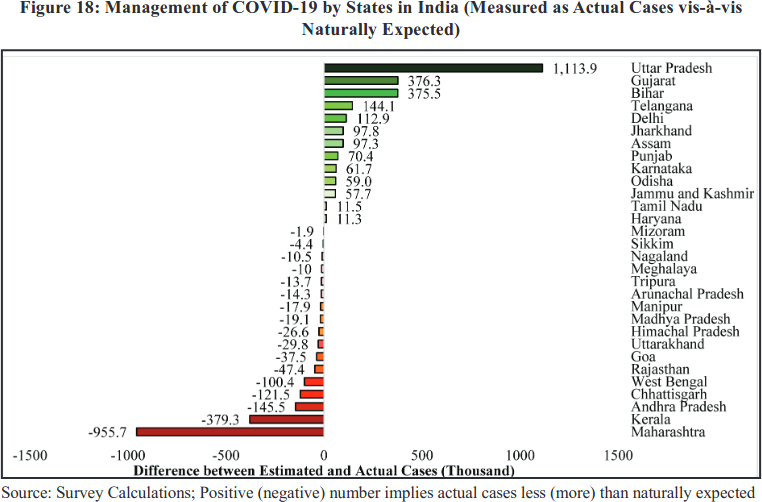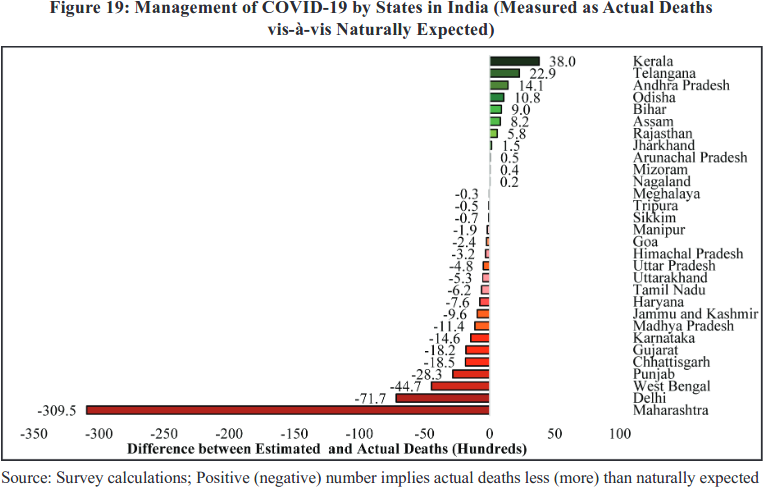
This thread is troubling. Yes, India's data is interesting - let's acknowledge the complexities and uncertainties, but based on evidence and without wild claims. #thread
https://twitter.com/VincentRK/status/1361846711715586050
First of all, the premise of the thread - comparing recorded cases and deaths across countries is meaningless without acknowledging differences in surveillance. There's enough seroprevalence data to go beyond "cases"...
From the latest Indian survey, about 3.5% of infections have been detected (science.thewire.in/health/third-n…).
In the US, it's over 20% (cidrap.umn.edu/news-perspecti…).
So an India-US comparison of cases per million is highly misleading.
In the US, it's over 20% (cidrap.umn.edu/news-perspecti…).
So an India-US comparison of cases per million is highly misleading.
We'll come to death surveillance. But whatever your views "India has had nowhere near the deaths the US has per capita" needs unpacking. Even if we fully trust India's fatality data, low recorded COVID mortality could be about low spread or low apparent fatality rates. 

...If we have data on spread, then we can estimate how many deaths to *expect* using international age-stratified fatality data. We can then compare expected and recorded deaths, quantify the "missing" deaths, and ask if they are "lives saved" or "unrecorded deaths".
This principle is vaguely acknowledged. But the calculations go very wrong. E.g., in Delhi there are 10K to 30K "missing deaths", not 500K.
https://twitter.com/muradbanaji/status/1363387535523684353
Let's come to death surveillance: "You cannot undercount ten times the death rate". First, where did 10 come from? Seroprevalence data + age-stratified international fatality data suggests that nationally there are between 3 and 8 "missing" deaths for each recorded one (not 10) 

Also, can we be sure you can't miss the great majority of COVID deaths? Response from @AndreasShrugged below. But there's also another question you face if you believe it's impossible to miss lots of COVID deaths and that's about variations *within* India.
https://twitter.com/AndreasShrugged/status/1363139132189536258
If a high fraction of COVID deaths can't be missed, then why is the death rate at face value in, say, Chhattisgarh, Maharashtra or Delhi many times higher than in, say, Bihar? (science.thewire.in/health/bihar-c…) 

The variation is only very marginally explained by age-structure. What are the hidden variables in play? Prior immunity via previous coronavirus infections? (Really so much greater in Bihar than Chhattisgarh?) Effective "shielding" of the elderly? Weak COVID death surveillance?
We should consider the "weak death surveillance" option carefully. E.g. look at recorded and estimated deaths from other diseases like TB (theprint.in/health/india-n…) or malaria (cghr.org/wordpress/wp-c…) to get a sense of how many deaths can be lost in official figures.
Even ICMR, in its first national serosurvey paper, acknowledged variable COVID death surveillance nationally. They explicitly chose to ignore a large part of the fatality data in their estimates of COVID-19 IFR.
https://twitter.com/muradbanaji/status/1308669828178366465
Ultimately, the data to estimate true COVID mortality just isn't there - almost no excess deaths data, little survey data so far, some news reports on undercounting... It seems that neither central nor state govts have an appetite for carefully investigating COVID mortality.
So, when people comment in wonder on India's apparently low mortality, I would ask two questions:
- have you checked carefully what mortality "should" be, based on levels of spread and age-structure?
- do you have an explanation for the huge variations in fatality within India?
- have you checked carefully what mortality "should" be, based on levels of spread and age-structure?
- do you have an explanation for the huge variations in fatality within India?
Let's leave mortality and turn to disease spread. A claim about the basic scale of spread: "half the country is probably seropositive". What's the evidence? It's ~21% according to the latest national serosurvey. 

Local seroprevalence data is patchy, but it tells us that spread has been very uneven - between and within states. This is an interesting story in itself, and it's enough to confirm wildly variable detection, making cases a poor proxy for infections.
So, national case data captures a highly unevenly weighted sum of very different local epidemics. Yes, some level of immunity is obviously contributing to bringing down cases. But another gap in our knowledge is the role of immunity vs ongoing mitigation.
There doesn't seem to be a reasonable database of NPIs across the country. But "Life is normal even in big cities" is an overstatement. Mitigation has been gradually reducing, but read local reports and you see that it is ongoing and picks up in response to local events. 

There are so many other questions that can't be glossed over. E.g., why did stringent lockdowns fail to halt the spread? Most probable answer: lockdown did successfully confine disease geographically to some extent, but failed to slow it in the hotspots to which it was confined.
Weak data and transparency makes answering basic questions about the Indian epidemic hard. In such a data-vacuum it's easy to push this or that theory. But backing these up with careless claims about prevalence and mortality get us no closer to understanding India's epidemic. n/n
• • •
Missing some Tweet in this thread? You can try to
force a refresh










